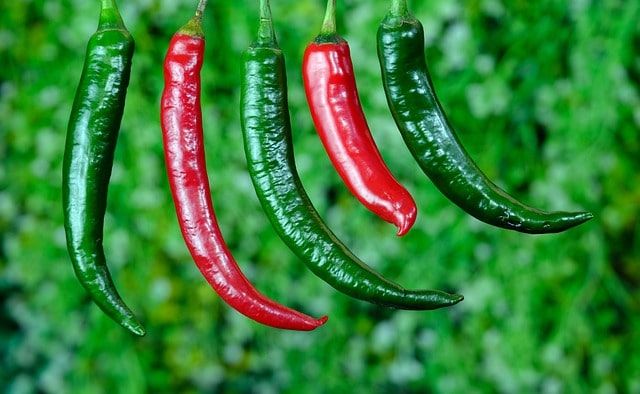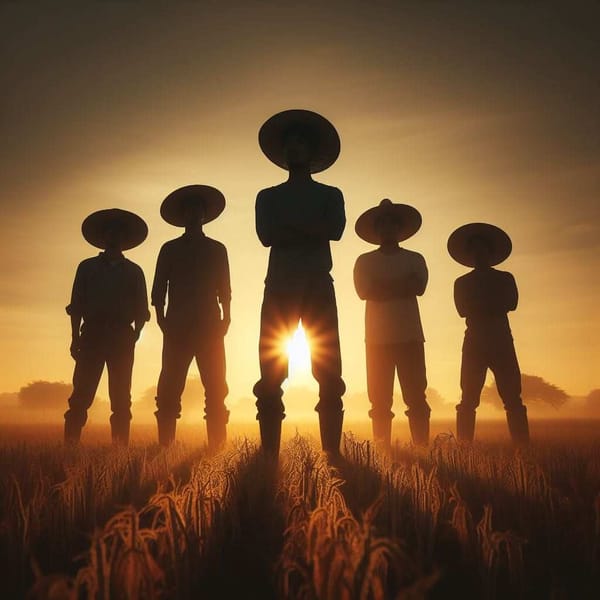The spicy creole chiles of Oaxaca
In Oaxaca, the diversity and flavor of the chiles of the state are unique characteristics of Oaxaca's creole chiles. The taste depends on the chile with which they are stewed, the herbs and spices that give them identity.

The variety of chiles in Oaxaca is one of the largest in the country. They are black, green, yellow, red, purple and white. The vast territory allows the diversity of the plant that has ended up becoming the reason for many dishes such as black, yellow, green, almendrado, coloradito moles, as well as sauces and stews such as salsa de gusanito, chicatanas, rajas de chiles de agua, chichilo or stewed armadillo.
The flavor depends on the chile with which they are stewed, the herbs and spices that give them their identity. The importance of chiles in the state is in the diversity and exquisiteness of the typical regional gastronomy, a product of the interaction of the art and culture of the indigenous peoples and the sensory properties such as color, smell, and flavor, unique of the creole chiles of Oaxaca.
Oaxaca is home to 25 of the 64 types of chiles nationwide. Oaxaca has the greatest diversity at the national level, which are cultivated and consumed by 18 indigenous groups in the eight regions of the state. The history of chili consumption in Oaxaca is recorded in the codices of the post-classical period, in Tecomaxtlahuaca and Yanhuitlán, of the Mixtec culture, which is represented with leaves, flowers, or fruits of chili.
The basic agriculture practiced in the communities has been an important source of genetic diversity for the conservation, use, and consumption of Oaxaca's creole chiles.
Chiles in every region
The chilhuacles family stands out for its qualities. There are black, red, and yellow ones; they are very popular for the elaboration of the traditional Oaxacan moles despite the fact that their cultivation is exclusively in the area of Cuicatlan, in the Cañada region. These scarce and highly valued chiles can be used both fresh and dried, which is when their spiciness increases considerably.
The chilhuacle is harvested at the end of October, which coincides with the Day of the Dead celebrations. Other smaller chiles are the achilito, very similar to a chilhuacle, and the tusta that grows in the Sierra Sur region with colors ranging from white to green, yellow, red, purple, mainly used to make sauces.
In the Coastal region, the king of hot peppers is the chile costeño; in the Central Valleys, the chile de agua dominates, while the chiltepes are the most used in the Cañada and the chilpayas in the vicinity of the Cuenca del Papalopan. The regions of the northern and southern sierras are known for the canary or apple chile, which is green, red, yellow and its seeds are black.
Cultivation of the capsicum plant (scientific name of the chili)
The extension of three thousand cultivated hectares (some 14 thousand tons) is insufficient for the cultivation of creole chili peppers such as agua, huacle, Soledad, and costeño, the most relevant ones. There are also several (environmental) factors that in the medium term may cause the plant's extinction.
Risk factors include pathogens (mainly diseases of a viral nature), pests (insect vectors of viruses), crop change, migration, abandonment of plots of land, among others. Achilito, coxle, and de monte, chiles characteristic of the Cañada and Isthmus regions, are at risk of extinction because they are highly susceptible to viral diseases, which, combined with high production costs, low consumer demand, and low marketing prices, are reducing the number of producers that grow them.
At equal or greater risk are the guiña shirunduu and guiña shuladi, from the Isthmus of Tehuantepec, as a consequence of the growth of land dedicated to grazing and rainfed crops. Other types of chili, such as bolita, chigolitos, and even nanche from the Central Valleys region of Oaxaca, have gradually ceased to be grown in the backyard, due to the lack of taste of the new generations for consuming hot peppers.
Chili People
The importance of chiles in the state is undoubtedly the diversity and exquisiteness of the typical regional gastronomy, a product of the interaction of the art and culture of the indigenous peoples, and the unique organoleptic characteristics of the creole chiles of Oaxaca.
The villages carry out their small rituals to achieve the balance of flavors. The preparation is meticulous, otherwise, there is a risk of making mistakes when their destiny is great.
A sample of the varied and rich Oaxacan cuisine is exhibited in the Oaxacan black mole, made with black huacle chile; red mole with Taviche chile; chile caldo with red huacle chile; chile de agua, stuffed with chicken mince, cheese or masa; chintextle made with pasilla mixe chile; higaditos de fandango, with chiles de agua.
Diversity and flavor
Costeño (red and yellow), Huacle (black, yellow and red), Coxle chile (yellow and red), Tabaquero chile, Soledad chile, Chile de Monte, Taviche chile, Pasilla Mixe chile, Chile Loco, Chile de Agua, Criollo de la Mixteca chile, chile de Mesa, chile Chiltepe, chile Canario, chile de Onza, chile Achilito, chile Paradito, chile Bolita, chile Nanche, chile Mirasol, chile Chilpayita, Güiña Shuladii, Güiña Siruunduu, chile Tusta and chile Chigolito.
Icon of the Valley
Of the 25 chiles that are produced and cultivated in Oaxaca, the chile de agua ("water chile") is the horticultural icon of the Valles Centrales region. It is produced in 33 of the 103 municipalities that make up the region, the only region in the country where it is cultivated; for this reason, it is the symbol of regional horticulture. The producers of the plant defend the theory that the chile de agua is originally from the Valles Centrales region, where the capital of the state is located, arguing that this crop has been grown in this region for more than 125 years.
The chile de agua has a great diversity in terms of shape, size, color, position, pungency, the thickness of the epidermis of the fruit, and bearing of the plant. In the Valles Centrales region, it is planted in areas that vary from 10,000 to 2,000 square meters, with an average regional yield of 6 tons per hectare. At harvest time it generates rural employment. It is mainly consumed fresh and used for the preparation of chiles stuffed with picadillo, cheese, and dough, mainly, the fresh fruit is used as a small cup to drink mezcal, a common tradition among producers at harvest time.
Essential accompaniment to mole
The importance of chicle huacle or chilhuacle lies in the fact that it is one of the recognized ingredients for the preparation of Oaxacan black mole, a dish that is present in most of the social and religious celebrations in Oaxaca. This chile is only found in Cuicatlán, in the Cañada region. The chilhuacle, an endemic species of Oaxaca, is not only the main ingredient of the famous black mole of Oaxaca but also an essential component of Oaxacan cuisine.
Its antecedents date back to pre-Hispanic times and in the viceregal world, it was used in the preparation of moles. More than thirty-three recipes are based on this chile, which today is in danger of extinction. It is a low plant, with a woody stem, the chiles are small, matte in color, discreetly spicy, with a penetrating aroma and very particular flavor, slightly fruity, it is the main ingredient of the black mole. It is in danger of extinction, currently, only 15 people actively and continuously cultivate it in the Cañada region.
It is very difficult to get it outside the state of Oaxaca, and even in the state, besides its cost is high, it can reach 500.00 pesos per kilogram; because of its price to the consumer, it is considered one of the most expensive chili peppers in Mexico. For the elaboration of Oaxacan black mole, huacle chile from the state of Zacatecas is being used, which is currently facing unfair competition. The Instituto Nacional de Investigaciones Forestales, Agricolas y Pecuarias (Inifap) has chile huacle cultivation plots using the greenhouse technique in the Valles Centrales and Cañada regions.




